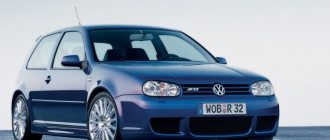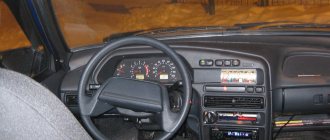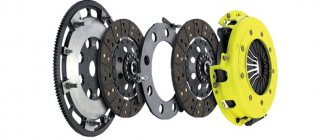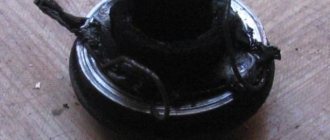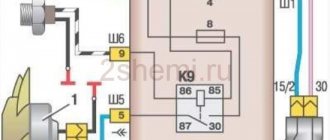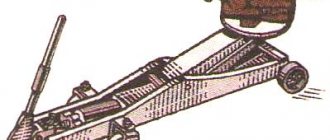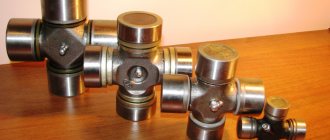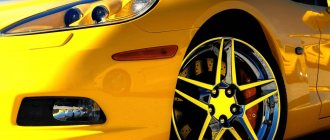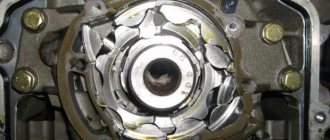For many modern car enthusiasts, the concept of double squeezing seems long forgotten. Experts still agree that you should not forget about this method. This is especially true when using manual transmissions. The use of this method is best considered before the advent of synchronizers.
In any case, any driver needs to know this as the basis of everything. Of course, this is not required for current generation technology, but anything can happen. With the help of such devices, speeds are equalized at different rotations of the shafts. Thus preventing the gears from locking. Only synchronizers were not introduced immediately. Initially, when changing gears, they used double squeezing or re-throttle. The use of the first technique is necessary to increase speeds, the task of the second is to reduce it.
Briefly about re-gasping and double squeezing
These procedures are necessary in cars with pedals without a gearbox equipped with synchronizers. It is worth noting the fact that they were not previously placed on boxes. Only after some time, with the advent of engineering developments and speculation that the machine should, in addition to being useful, also have ease of operation. This is how synchronizers entered the lives of motorists.
Riding in extreme conditions
Driving with slippage truly “kills” the clutch, which often happens in unforeseen, extraordinary conditions. When we happen to get out of a puddle or a snowdrift, we are forced to speed up the engine, giving it high speeds and sharply engage the clutch.
In this situation, not only the linings on the disk burn fatally. Such harsh operating conditions also threaten more serious damage, including to other vehicle components. Therefore, if possible, ask to be taken in tow. Don't burn the clutch.
Purpose of double squeeze
Mechanisms such as synchronizers facilitate the process of gear shifting, making it smooth. At the same time, wear is reduced and the specific grinding noise characteristic of older models is also eliminated. If there are no synchronizers or they are broken, you cannot do without double squeezing.
So why is it really needed? The need is due to the equalization of engine speed by gears and shafts. Otherwise, these parts may jam at best. In practice, this happens as follows: moving at first speed, the engine speed is increased to three thousand revolutions. To switch to second, you need to release the gas, squeeze the clutch, go to neutral. Then wait until the speed drops and press the clutch again, switch to second. In this way, the shafts are equalized without damaging the gearbox. Then you can move on calmly.
In the case of re-gassing, the process is a reverse action. This implies reducing the gear without putting the gearbox to sleep. If you need to turn on the road, but it is impossible to do this in fourth gear, you must slow down and lower the gear. Otherwise, there is a risk of stalling. You can smoothly release the gas by squeezing the clutch and move to neutral. The next action will be to gain momentum. To do this, you will have to activate the gas pedal, in other words, make a shift. That's it, after that we managed to increase the speed. Synchronization with the shaft has occurred. You can now downshift and continue driving.
It is recommended to adhere to the throttle pause at neutral during the process. The main thing here is to catch the right clutch moment in time to prevent the car from stopping. Skills come with experience, of course. Therefore, there are no special skills or secrets here.
The question arises: why is this necessary when modern cars are equipped with synchronizers? If you remember that often the road is not perfectly smooth, there are always some obstacles.
Therefore, synchronizers may fail on the first bump or climb. This is where re-gassing comes to the rescue. For example, when going up, you realize that this transmission cannot pull you through. There are simply not enough revolutions, the throttle is overloaded. This allows you to switch to a lower gear without losing the necessary inertia.
Life threatening!
Let us now consider several cases where even the most minor errors during braking can lead to tragic consequences.
The first is emergency braking, when the car needs to be stopped at all costs and as soon as possible. For example, a child suddenly jumped out onto the road or an accident occurred right in front of you. The driver’s actions in this case are extremely simple: immediately press the brake pedal to the floor until the car comes to a complete stop.
The clutch should only be released when the speed drops to the minimum level. This will prevent the engine from stalling and will give you freedom to maneuver in a situation where danger suddenly appears on the other side.
For example, you slowed down to a minimum, which allowed you to avoid a sudden road obstacle or let a pedestrian cross the road, but the car behind you did not have time to stop. This is fraught with the fact that he, by inertia, will ram the car that has urgently stopped in front of him. You can prevent this development of the situation by moving forward slightly or moving to the side. But you can do this only by maintaining full control over your car - when the engine is running and the gear is engaged.
A typical mistake made by many inexperienced drivers is pressing the clutch and brake simultaneously during emergency braking. This method will allow you to stop a bicycle faster, but not a car. If you stop pedaling a bicycle while pressing the brakes, it will stop faster, but this will not work with a car.
On car models without ABS, pressing the clutch and brake will definitely lead to wheel locking. As a result, the “iron horse” will simply bite the bit - that is, it will stop obeying the steering wheel and will fly in a straight path. If your car has built-in anti-lock braking system, things won't be much better.
All of the above fully applies to slowing down when entering a sharp turn. But here, in addition to the danger of losing control of the car, the likelihood of an uncontrolled skid is added. Depressing the clutch is especially dangerous when braking in difficult road conditions: for example, in icy conditions, on compacted crust or on wet asphalt. A sudden locking of the wheels at the moment of entering a sharp turn will inevitably cause the car to fly off the road.
About engine braking
There is a point that drivers should be aware of. Engine braking is necessary in case of brake failure. Also in case of heavy ice, steep descent. The ability to brake with the engine in such situations saves. While driving, if you feel that the brakes cannot cope, you need to switch to a lower gear, thereby increasing the speed. This will cause a drop in transmission speed. The car will slow down smoothly.
Then, in a similar way, you should switch until the threat disappears. You will be able to stop using the brakes or continue driving. Only this applies to mechanics. If it is automatic, you will have to overload the box, gradually reducing the speed. After waiting for the 90 km/h mark, you can transfer the car to second, again wait for the drop to fifty. Then you need to switch to low. This is not difficult due to modern machine designs. They can adapt to a specific driving style. Even if you let off the gas, the gear reduction will be carried out automatically, despite the lack of revolutions.
It is recommended not to neglect re-throttle, which can reduce the load on the synchronizers, ensuring that the traction force is maintained when switching to low gears.
Car clutch device
The operation of the car’s clutch is ensured by the following parts:
- flywheel;
- fork;
- pressure disk;
- spring (can be push or pull type);
- release bearing and clutch;
- driven disk;
- drive elements.
The flywheel is responsible for transmitting torque to the gearbox. It is mounted on the crankshaft of the engine. The pressure plate, or as it is also called the “basket,” is an element rigidly fixed on the flywheel, to which the springs of the driven disk are attached.
The pressure and driven disks in connection with the flywheel are responsible for the smooth distribution of torque from the engine to the manual transmission. The parts are in close contact with each other or move away from each other, depending on the pedal press inside the car.
The push clutch performs the main function: it smoothly disconnects during braking and connects the engine and gearbox when starting. At the same time, it compensates for the load and minimizes the vibration impact from the engine, thereby partially unloading the elements of the engine, vehicle transmission and clutch unit.
The release bearing protects the clutch from wear. When you press the pedal, the fork separates the pressure and driven discs. The remaining components of the clutch drive are cables, hydraulic cylinders, tubes and the pedal itself.
Tip 3: How to learn to drive a car
Studying at a driving school is the basics, and perfection comes with kilometers behind the wheel. At a driving school you will only be given a theoretical and practical knowledge base, which will be very difficult for you during your first days on the road. Improving your skills should be done with an experienced person who can point out mistakes and teach you how to perform elements and technical nuances.
- Get on the road every day. Until you have muscle memory, you need to rack up as many driving hours as possible. It could even be circling around a deserted parking lot or leisurely driving along a country road. Your goal is to get used to the car, to bring acceleration and braking to automaticity, a straight trajectory, and to get used to the dimensions of the car.
- Get rid of psychological pressures and fears. Your uncertainty gives rise to mistakes and dissatisfaction of other participants in the movement. Place a “Student Driving” sign (exclamation mark in a yellow square) on your rear window. For other drivers, this will be a sign that there is no need to make sudden maneuvers and lane changes in front of you, or to honk in response to your slowness. If at any point you feel like you are losing control of the situation, turn on your hazard lights and pull to the side of the road. Take a break, think and hit the road with renewed vigor.
- Learn to predict the actions of traffic participants. You should always be in control of everything that happens around your vehicle. You must calculate the cars ahead two ahead. If a truck is driving in front of you and is blocking your view, overtake it or change lanes. Otherwise, a situation is possible when the car in front suddenly changes lanes in front of an obstacle that has arisen, and you will not have time to do this.
- Students say that the most difficult thing is working with a manual transmission and changing lanes in heavy traffic. Mastering the “mechanics” takes more time, but you will also get more pleasure from driving. Plus, manual transmission is more convenient and safer in winter. Changing lanes in heavy traffic requires the driver to have a sense of speed and distance. You need to learn how to accelerate to the speed of the flow, maintain it and change lanes at a safe distance.
Why does it burn
It is at the moment of incomplete contact with each other of the disks rotating at different speeds that the linings burn out. Whenever we operate the clutch incorrectly, the gap gradually increases, and subsequently the squeeze becomes incomplete - the clutch begins to slip. The disk needs to be changed.
It's OK. After all, this is an ordinary consumable part for your car, designed for approximately 80,000 km if used correctly.
Source

